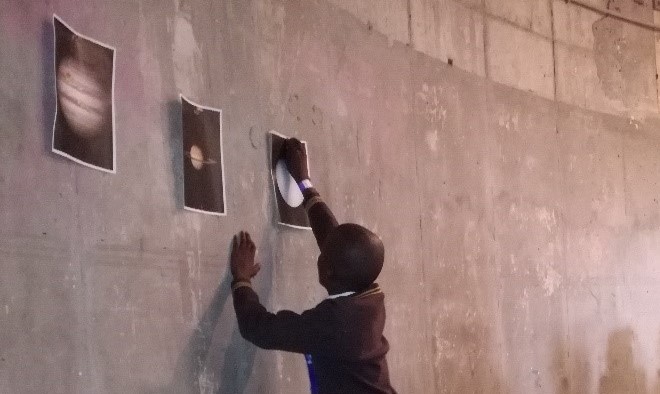By Matebello Motantsi and Lelethu Tonisi
Scholars from various schools played audience to the fired up Sivuyile Manxoba on Friday when he facilitated A hitchhiker’s guide to the universe, a Scifest workshop presented by the Southern African Astronomical Observatory (SAOO).
The observatory, which is an organisation of the National Research Foundation, is based in Cape Town and Sutherland. Sutherland is home to the Southern African Large Telescope (SALT), which is the largest telescope in the southern hemisphere and third largest universally. Sharing its Karoo home are telescopes from America and Russia.
Manxoba explained that Sutherland is a favourable place for astroscience because it is arid and little rain means the skies are clear for observations. Also, it is a rural area so there is no light pollution (artificial light can be mistaken for stars or simply obstructs the view).
Students were encouraged to participate throughout the event and each participant was rewarded with a chocolate treat. They had to demonstrate different ways of removing a can from a mug, and identify individual planets on a piece of paper. Then, using the sun as a starting point, they had to place the planets in the right sequence and at accurately estimated distances. These interactive exercises offered a meaningful way of learning about how the universe works while sparking an interest in astroscience.
Manxoba encouraged the pupils to show interest in fields like astronomy and astrophysics, indicating that there are a lot of study opportunities and bursaries in South Africa. “Start thinking about your contribution towards saving humanity,” he said. These were his last words as he pointed out that the world is drastically changing and it is up to everyone to find innovative ways of conserving it.
Did you know?
- The sun is a star, it is 150km away from the earth.
- Stars also contribute to providing planets with light, they are bigger than planets but appear small since they’re very far.
- On Mercury, one day is made up of two years. This is because Mercury is closest to the sun and therefore rotates around it faster.
- Venus is the second closest planet but the hottest. This is due to the planet having a thick carbon dioxide cloud that traps heat for a long time.
- The first five planets can be seen with the naked eye at certain times of the day and are collectively referred to as the “naked eye planets”.



